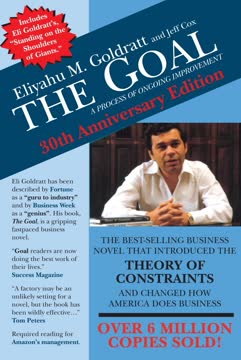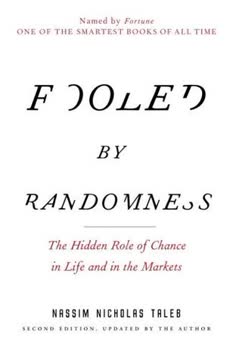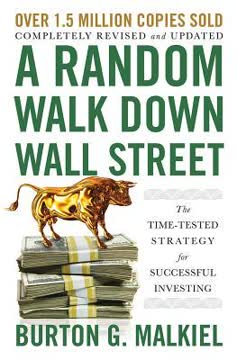Key Takeaways
1. Real Money's Crisis: Size, Impact, and Taxpayer Risk
Real money funds are in crisis and are “too big to fail.”
Massive Scale. Real money funds, including pensions, endowments, and foundations, manage trillions of dollars globally, with U.S. pensions alone accounting for a quarter of total managed assets. This immense size makes their performance critical to the stability of the financial system.
- Pensions: $24 trillion globally, $15 trillion in the U.S.
- Total managed assets: $62 trillion globally (end of 2008)
Societal Impact. These funds are the backbone of modern society, providing retirement benefits, supporting education, and funding charitable activities. Their performance directly affects the lives of millions, and their failures can have far-reaching consequences.
- Pensions: Ensure basic societal functions are populated by competent people
- Endowments: Support universities and research
- Foundations: Fund charitable activities
Taxpayer Backstop. Many real money funds, particularly public pensions, are ultimately backstopped by the taxpayer. Underfunded pensions create a potential cost to society that is too great to ignore, making their management a matter of public concern.
- PBGC (Pension Benefit Guaranty Corp.) deficit: $33.5 billion (mid-2009)
- Underfunded pensions: Can lead to cuts in public services and increased taxes
2. The Evolution of Real Money: From Bonds to the Endowment Model
The shift into stocks, and corresponding increase in risk, occurred in lock step with Federal Reserve Chairman Paul Volcker’s famous battle with inflation.
Early Conservatism. Initially, real money funds were managed conservatively, primarily investing in bonds to match fixed liabilities. However, the high inflation of the 1970s eroded bond portfolios, prompting a shift towards equities.
- 1949: U.S. pension assets were $15.7 billion, mostly in bonds
- 1970s: Inflation eroded bond portfolios, leading to a shift to equities
The 60-40 Model. The 1980s and 1990s saw a move towards the 60-40 policy portfolio (60% stocks, 40% bonds), which became the standard benchmark. This shift coincided with falling inflation and declining interest rates, creating a favorable environment for both stocks and bonds.
- 1980s-1990s: Shift to 60-40 model
- Great Moderation: Falling inflation and declining interest rates
The Endowment Model. After the dot-com crash, the success of the Harvard and Yale endowments led to the adoption of the Endowment Model, which emphasized diversification into illiquid, equity-like investments.
- Post-2000: Shift to Endowment Model
- Emphasis on illiquid alternatives: private equity, real estate, venture capital, etc.
3. The Crash of '08: Flaws in the Endowment Model Exposed
The crash of ‘08 highlighted flaws in the Endowment Model, namely: (1) diversification with a high equity orientation is not really diversification; (2) valuation matters, whether it applies to equities, real estate, or liquidity; (3) investing in certain limited partnerships is a form of leverage; and (4) time horizons are not as long as previously envisioned for investors with annual liquidity needs.
Equity Concentration. The Endowment Model, despite its emphasis on diversification, remained heavily concentrated in equity and equity-like investments, leading to massive losses during the 2008 crash.
- High correlation: Equity-like assets moved in tandem
- Yale Endowment: 99.9% in equity and equity-like assets in 2008
Valuation Matters. The success of early adopters of the Endowment Model was partly due to the cheap valuations of illiquid assets at the time. As more investors piled in, valuations became stretched, and the crash exposed the dangers of ignoring valuation.
- Early entrants: Benefited from cheap illiquids
- Later entrants: Overpaid for illiquids
Implicit Leverage. Real money portfolios often attained leverage through allocations to external managers, particularly in private equity and venture capital, which required advanced commitments. This implicit leverage amplified losses during the crisis.
- Over-commitment: Up to two times the target allocation
- Capital calls: Increased exposure during the crisis
Time Horizon Misconception. The assumption that real money investors have extremely long time horizons was challenged by the crisis, as many institutions faced short-term cash obligations that they could not meet due to the illiquidity of their portfolios.
- Illiquidity: Made cash obligations difficult to meet
- Short-term needs: Exposed the fallacy of long-term time horizons
4. Rethinking Real Money: Macro Principles for a New Paradigm
It is time to rethink real money management, and a good place to start is with portfolio managers who fared well in 2008, either by posting strong performance or by preserving capital.
Global Macro Resilience. Global macro hedge funds, in aggregate, managed risk effectively during the 2008 crisis, either by posting strong performance or by preserving capital. This highlights the importance of risk management and liquidity.
- HFRI Macro Index: +4.83% in 2008, +4.03% in 2009
- Risk management: Key differentiator during crises
Avoid Large Drawdowns. The most powerful force in the world is compound interest, but avoiding large drawdowns is an important implicit part of this phenomenon. Large losses can wipe out years of performance.
- Negative compounding: Losses are harder to recover from
- Siegel's Paradox: Losses require disproportionately larger gains to break even
New Model for Real Money. Real money management needs to be rethought, incorporating elements of the global macro approach, such as a focus on risk management, liquidity, and a forward-looking perspective.
- Risk-adjusted returns: Prioritize risk management over return targets
- Forward-looking: Focus on the macro environment, not historical data
- Liquidity: Value liquidity and avoid over-committing to illiquid assets
5. The Researcher's View: Debt, Stimulus, and the Great Macro Experiment
The Great Macro Experiment, therefore, is an attempt to use aggressive reflationary policies to overcome the effects of debt deflation after the equity bubble burst.
Private Sector Debt. The real problem is private sector debt, not government debt. Private sector debt just kept growing and growing, and the government can almost always fund its debt if it decides to print money; the private sector cannot.
- Private sector debt: The real problem
- Government debt: Can be funded by printing money
The Great Macro Experiment. The aggressive monetary and fiscal stimulus following the dot-com bust and the 2008 crisis is an attempt to avoid a depression by overcoming the effects of debt deflation.
- Aggressive reflationary policies: To overcome debt deflation
- Quantitative easing and bailouts: Part of the hyper-experiment
Fiscal Policy Matters. Fiscal policy, particularly tax cuts for higher income earners, played a role in fueling asset bubbles. Fiscal tightening, combined with monetary tightening, can lead to deeper downturns.
- Bush tax cuts: Fueled the housing bubble
- Hoover's tax hikes: Worsened the Great Depression
Adjustment Underway. Although excess debt remains, it is falling as households pay back debt or default. This adjustment process, coupled with policy responses, increases the probability of inflation rather than deflation.
- Debtors deleveraging: Reducing private sector debt
- Creditors spending more: Narrowing trade imbalances
6. The Family Office Manager's Perspective: Cash, Risk, and Opportunity
To an absolute return investor, cash is an essential asset.
Cash is Not Trash. Unlike the Endowment Model, which views cash as a drag on returns, absolute return investors see cash as an essential asset that provides flexibility and the ability to capitalize on opportunities.
- Endowment Model: Cash is "trash"
- Absolute return: Cash is an essential asset
Dynamic Value of Cash. The value of cash is not static; it increases during periods of market stress, providing the ability to buy assets at bargain prices.
- Opportunity cost: Cash provides flexibility
- 2008: Cash enabled investors to buy trashed assets
Illiquidity Costs. The Endowment Model's focus on illiquid assets can make it difficult to capitalize on opportunities during crises, as these assets cannot be easily sold to raise cash.
- Illiquid assets: Difficult to sell during crises
- Redemption issues: Can take time to access capital
Risk Management. Real money managers need to focus more on managing downside risk and less on chasing returns. The goal should be to avoid large drawdowns that can wipe out years of performance.
- Risk-adjusted returns: Prioritize risk management
- Drawdown control: Avoid large losses
7. The House's Approach: Liquidity, Risk, and the Long Game
The lesson of the importance of liquidity will be remembered by the survivors and will likely not be forgotten for a generation.
Liquidity is Key. The most important lesson of 2008 was the value of liquidity. Having liquid positions allows you to avoid making bad decisions in a crisis and provides funding potential to take advantage of extreme prices.
- Liquid positions: Essential for flexibility
- Illiquid assets: Can become unsellable during crises
Value of Liquidity. The value of cash is not just its return, but also the opportunity cost of not having it. Cash allows you to take advantage of unique opportunities when they arise.
- Cash: Provides flexibility and opportunity
- Illiquidity: Limits ability to capitalize on opportunities
Risk Management. Good risk management is essential for long-term success. It involves understanding how much you can lose in your portfolio at any given time and structuring your portfolio to limit downside risk.
- Risk-based approach: Anchor portfolio construction in risk
- Downside protection: Limit potential losses
Long-Term Perspective. Real money managers should use their inherent strengths, such as their long-term investment horizon and credit worthiness, to pick up extra return from activities where they provide some kind of risk-free liquidity.
- Long-term horizon: Advantage for real money
- Risk-free liquidity: Opportunity for extra return
8. The Philosopher's Insights: Probabilities, Psychology, and the Long View
Views sometimes count very little, whereas good risk management always counts a lot.
Probabilistic Thinking. The Philosopher focuses on probabilities and the range of potential outcomes, rather than trying to predict a single, certain future. He seeks to identify mispricings in the market based on these probabilities.
- Hypothesis testing: Focus on what is more fit, not what is true
- Probabilistic approach: Consider a range of outcomes
Market Psychology. Understanding market psychology is crucial. Markets are driven by human expectations, beliefs, hopes, and fears, which can lead to mispricings and opportunities.
- Market sentiment: Driven by human psychology
- Mispricings: Result from flawed expectations
Risk Management. Good risk management is essential for long-term success. It involves understanding how much you can lose in your portfolio at any given time and structuring your portfolio to limit downside risk.
- Risk-based approach: Anchor portfolio construction in risk
- Downside protection: Limit potential losses
Adaptability. The ability to change your views as facts change is crucial for success. Persistently holding on to views, regardless of changing reality, is a recipe for failure.
- Flexibility: Change views as facts change
- Avoid rigidity: Adapt to new information
9. The Commodity Trader's Edge: Asymmetric Bets and Market Cycles
The most successful made substantial gains, in large part due to tactical risk management techniques.
Tactical Risk Management. The Commodity Trader emphasizes tactical risk management techniques, focusing on liquidity and asymmetric bets. He seeks to capitalize on market inefficiencies and dislocations.
- Tactical approach: Focus on risk management
- Asymmetric bets: Limit downside, maximize upside
Commodity Super Cycle. The Commodity Trader believes in the commodity super cycle, driven by emerging market demand. However, he recognizes the importance of managing risk and liquidity during volatile periods.
- Emerging market demand: Driving commodity prices
- Volatility: Requires tactical risk management
Liquidity and Flexibility. The Commodity Trader values liquidity and flexibility, allowing him to capitalize on opportunities and avoid getting trapped in illiquid positions.
- Liquid positions: Essential for flexibility
- Illiquidity: Can limit ability to capitalize on opportunities
Valuation Matters. The Commodity Trader emphasizes the importance of valuation, seeking to buy assets when they are cheap and sell them when they are expensive. He also recognizes the importance of understanding the macro environment.
- Valuation: Key to identifying opportunities
- Macro environment: Important for understanding demand
10. The Commodity Investor's Thesis: Long-Term Trends and Real Assets
The path to hyperinflation may well involve an initial period of healthy-looking recovery.
Long-Term Structural Bull. The Commodity Investor is a long-term structural bull on commodities, driven by the increasing demand from emerging markets and the limited supply of many resources.
- Emerging market demand: Driving commodity prices
- Limited supply: Creates upward pressure on prices
Real Assets as a Hedge. Real assets, such as commodities and farmland, are a good hedge against inflation and currency debasement. They also offer a way to diversify away from traditional financial assets.
- Real assets: Hedge against inflation
- Diversification: Away from traditional financial assets
Importance of Fiscal Policy. Fiscal policy is often underestimated, but it plays a crucial role in shaping the economy. The Commodity Investor emphasizes the importance of maintaining expansionary fiscal policy for long enough.
- Fiscal policy: Underestimated but crucial
- Monetary policy: Less effective without fiscal stimulus
TIPS as a Core Holding. Treasury Inflation-Protected Securities (TIPS) are a good way to protect against inflation, offering a positive yield over inflation and a principal guarantee in the event of deflation.
- TIPS: Protection against inflation and deflation
- Positive yield: Over inflation
11. The Equity Trader's Adaptability: From Technicals to Fundamentals
The key is finding cheap things that will go up in scenarios where everything else is going down.
Adaptable Style. The Equity Trader has evolved from a price-based, technical trader to a more fundamental, theme-based trader, demonstrating the importance of adaptability in the markets.
- Technical trading: Initial focus on price action
- Fundamental analysis: Evolved to incorporate macro themes
Importance of Liquidity. The Equity Trader emphasizes the importance of liquidity, allowing him to move quickly in and out of positions and to capitalize on opportunities.
- Liquid positions: Essential for flexibility
- Illiquidity: Limits ability to capitalize on opportunities
Valuation Matters. The Equity Trader believes that valuation matters, and that it is important to buy assets when they are cheap and sell them when they are expensive.
- Valuation: Key to identifying opportunities
- Long-term returns: Not guaranteed regardless of price
Risk Management. The Equity Trader focuses on risk management, using options and other strategies to limit downside risk and to protect his portfolio from large drawdowns.
- Risk collars: Limit downside risk
- Downside protection: Avoid large losses
12. The Pensioner's Prescription: Risk, Leverage, and a New Approach
The main question I am faced with is how to run a large pension fund in light of these issues.
Flawed Assumptions. The Pensioner argues that the standard methods of asset allocation used by pension funds are based on empirically false assumptions, such as normally distributed returns and stable correlations.
- Flawed assumptions: Normal distribution and stable correlations
- Need for new models: To address risk and funding issues
Risk-Adjusted Returns. Pension funds should focus on risk-adjusted returns rather than just return targets. Big drawdowns and volatility matter, and portfolios should be constructed to account for extreme worst-case scenarios.
- Risk-adjusted returns: Prioritize risk management
- Drawdown control: Avoid large losses
Leverage as a Tool. Leverage, when used properly, can be a tool for improving portfolio diversification and returns. Levering low-volatility assets, such as government bonds, can help to reduce overall portfolio risk.
- Leverage: Can improve diversification
- Low-volatility assets: Can be levered to reduce risk
Pensions are Different. Pensions are different from other real money accounts because they are ultimately backstopped by the taxpayer. This means that pension fund performance has important societal implications.
- Taxpayer backstop: Pensions are "too big to fail"
- Need for reform: To address underfunding issues
Last updated:
FAQ
What’s [The Invisible Hands: Hedge Funds Off the Record – Rethinking Real Money] by Steven Drobny about?
- 2008 Crisis Analysis: The book examines how global macro hedge fund managers navigated the 2008 financial crisis, preserving capital or even profiting while most traditional investors suffered heavy losses.
- Real Money Critique: It critiques the traditional “real money” management approach used by pensions, endowments, and foundations, highlighting their vulnerabilities in risk management and portfolio construction.
- Hedge Fund Insights: Through interviews with top (often anonymous) hedge fund managers, the book reveals advanced risk, liquidity, and portfolio strategies for the post-crisis world.
- Call for Change: Drobny encourages institutional investors to rethink their methods, advocating for risk-adjusted, absolute return approaches over outdated models.
Why should I read [The Invisible Hands] by Steven Drobny?
- Access to Elite Minds: The book offers rare, candid insights from leading global macro hedge fund managers who successfully weathered the 2008 crisis.
- Practical Lessons: Readers gain actionable advice on risk management, portfolio construction, and adapting to volatile markets—relevant for both professionals and serious individual investors.
- Societal Impact: Since real money funds manage assets that affect pensions, education, and public services, improving their risk management has broad societal benefits.
- Bridges Two Worlds: The book uniquely connects the worlds of hedge funds and institutional investors, showing how the former’s techniques can improve the latter’s outcomes.
What are the key takeaways from [The Invisible Hands] by Steven Drobny?
- Risk Over Returns: Successful managers focus on risk management and capital preservation, not just chasing high returns.
- Liquidity is Critical: The 2008 crisis exposed the dangers of underestimating liquidity risk, especially for real money investors.
- Diversification Limits: Many portfolios were less diversified than believed, with hidden concentrations in equity-like and illiquid assets.
- Adaptability Wins: The ability to adapt strategies, use tactical asset allocation, and employ derivatives for hedging is crucial in modern markets.
What does “real money” mean in [The Invisible Hands] by Steven Drobny, and why is it important?
- Definition: “Real money” refers to traditional, fully funded, long-only asset managers like pension funds, endowments, and sovereign wealth funds, typically with little or no leverage.
- Scale and Impact: These investors manage the majority of global assets (over $60 trillion in 2008) and directly affect retirement, education, and public services.
- Crisis Vulnerability: Real money funds suffered massive losses in 2008, revealing flaws in their risk management and portfolio construction.
- Need for Reform: Their performance has significant societal consequences, making it critical to improve their investment approaches.
How did the Endowment Model contribute to real money losses in 2008, according to [The Invisible Hands] by Steven Drobny?
- Equity and Illiquidity: The Endowment Model led to heavy allocations in illiquid, equity-like alternative assets, increasing risk concentration.
- Liquidity Mismatch: Many endowments held 50–100% in illiquid assets, making it hard to meet cash needs during the crisis and forcing sales at depressed prices.
- Valuation Blindness: The model often ignored valuation and timing, assuming equities always outperform long-term, which proved costly in 2008.
- Overconfidence in Diversification: The approach underestimated the correlation spikes and liquidity risks that materialized during market stress.
What are the most important lessons about risk management and portfolio construction in [The Invisible Hands] by Steven Drobny?
- Risk-First Mindset: Top managers anchor their process in risk management, emphasizing downside protection and drawdown control.
- Liquidity Focus: Liquidity is treated as a form of insurance, enabling managers to act during market stress and avoid forced sales.
- Diversification by Risk: True diversification is achieved by spreading risk across uncorrelated sources, not just by asset class.
- Dynamic Adjustments: Successful portfolios are built from many small, independent bets, with positions adjusted as market conditions change.
How do global macro hedge funds differ from real money investors in [The Invisible Hands] by Steven Drobny?
- Risk Anchoring: Macro hedge funds prioritize risk management and tactical flexibility, aiming to avoid large drawdowns and preserve capital.
- Instrument Breadth: They use a wide range of instruments—equities, bonds, commodities, currencies, derivatives—to express views and manage risk.
- Liquidity Management: Hedge funds maintain higher liquidity and use derivatives to hedge tail risks, unlike many real money funds locked in illiquid assets.
- Performance Resilience: The HFRI Macro Index, for example, posted positive returns in 2008 and 2009, contrasting with heavy losses for most real money investors.
What is Steven Drobny’s advice for rethinking real money management in [The Invisible Hands]?
- Risk-Adjusted Targets: Replace simple return targets with risk-adjusted goals that account for worst-case scenarios and tail risks.
- Forward-Looking Analysis: Use macroeconomic and market analysis to anticipate risks, rather than relying solely on historical data and correlations.
- Liquidity as a Priority: Treat liquidity as a critical risk factor, and avoid overvaluing illiquid assets or assuming time horizons are longer than they really are.
- Embrace Tactical Flexibility: Incorporate more tactical trading and dynamic asset allocation to respond to changing market conditions.
How does [The Invisible Hands] by Steven Drobny explain the importance of liquidity in investing?
- Liquidity as Insurance: Liquidity allows managers to act during market stress, capitalize on mispricings, and avoid forced sales at fire-sale prices.
- Underappreciated Risk: Many real money investors underestimated liquidity risk, leading to severe losses and inability to meet obligations in 2008.
- Illiquidity Premium: While investors can earn a premium for holding illiquid assets, the risks are often underestimated and can be catastrophic in crises.
- Explicit Limits Needed: Managing illiquidity requires diversification and explicit limits on illiquid exposures to avoid systemic problems.
What role does leverage play in portfolio construction according to [The Invisible Hands] by Steven Drobny?
- Leverage as a Tool: When used prudently, leverage can reduce portfolio volatility and increase returns by levering low-risk assets and delevering risky ones.
- Types of Leverage: The book distinguishes between good leverage (hedging, diversification) and bad leverage (overlevering risky or opaque positions).
- Hidden Risks: Many real money funds avoid explicit leverage but take on hidden leverage through private equity and alternative assets.
- Constraints and Performance: Overly strict constraints on leverage can lead to suboptimal portfolios and missed opportunities for risk-adjusted returns.
How do options and derivatives feature in the investment strategies discussed in [The Invisible Hands] by Steven Drobny?
- Asymmetric Payoffs: Managers use options to create trades with limited downside and large upside, improving risk/reward profiles.
- Risk Collars: Techniques like selling calls and buying puts (risk collars) are used to protect large positions, especially during market shocks.
- Volatility Management: Options help reduce timing risk and allow managers to hold positions longer without being stopped out by short-term swings.
- Dynamic Hedging: Derivatives are used to hedge tail risks and adjust exposures quickly as market conditions evolve.
What are the best quotes from [The Invisible Hands] by Steven Drobny, and what do they mean?
- “Diversification, diworsification.” (Warren Buffett): Over-diversification can dilute conviction and accountability; focus on purposeful, risk-based concentration.
- “The biggest mistake from the institutional side of the investing world is bucketing by type of investment, as opposed to by correlation or risk factors.”: Emphasizes the need for risk-based portfolio construction over simplistic asset class buckets.
- “Cash is the only thing that can save you in a liquidity crisis.”: Highlights the critical role of liquidity and the protective power of cash or government bonds during market turmoil.
- “Markets reflect beliefs, not just fundamentals.”: Reminds investors that prices are shaped by expectations, hopes, and fears, leading to frequent mispricings and the need for adaptability.
Review Summary
The Invisible Hands by Steven Drobny explores hedge fund strategies through interviews with top traders. Readers appreciate the insights into risk management, market dynamics, and investment philosophies. The book offers valuable perspectives on navigating financial crises and adapting to changing markets. Some found it esoteric and repetitive, while others praised its depth and relevance. Critics noted a narrow focus on real money management and excessive technical jargon. Overall, the book is recommended for serious investors seeking to understand hedge fund operations and market mechanics.
Similar Books










Download PDF
Download EPUB
.epub digital book format is ideal for reading ebooks on phones, tablets, and e-readers.





